that certainly looks like an Ortofon 2M Bronze in the second pic, not the $99 Red...
looking foward to listening to these
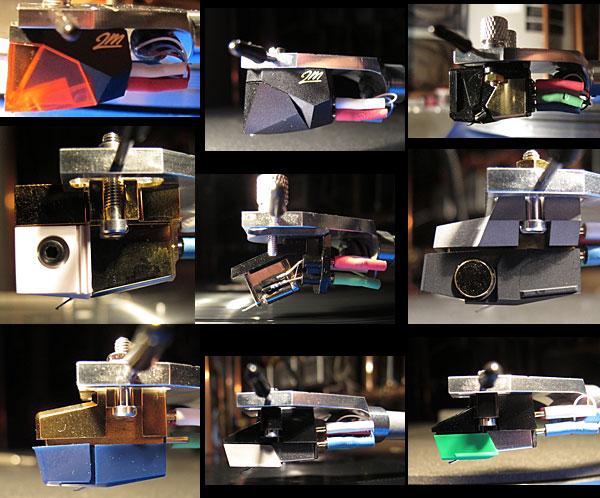
Each was recorded using one of ten different cartridges, nine of which were mounted on a VPI Traveler connected to a Graham Slee Era Gold Mk. V MM phono preamp.
The tenth is Ortofon’s $8499 Anna, which was mounted on the Continuum Cobra tonearm, Caliburn turntable combo connected to a Ypsilon MC-16 step transformer and VPS-100 phono preamp. That file is the “control” against which the others should be compared, except it will not be identified as such. None of the files, all created using a moderately priced HRT LineStreamer+ analog to digital converter, will be identified.
If you so choose, you can download the FLAC files and using a USB DAC, play them through your audio system. This will enable you to compare each cartridge’s rendering of the same song and your judgments without knowing which was which. Should you choose, you can vote for your favorite and in addition, in the comment section, we welcome your top three or top five favorites.
Listed from least expensive to most expensive, the nine moderately prices cartridges are:
Audio-Technica AT95E ($40)
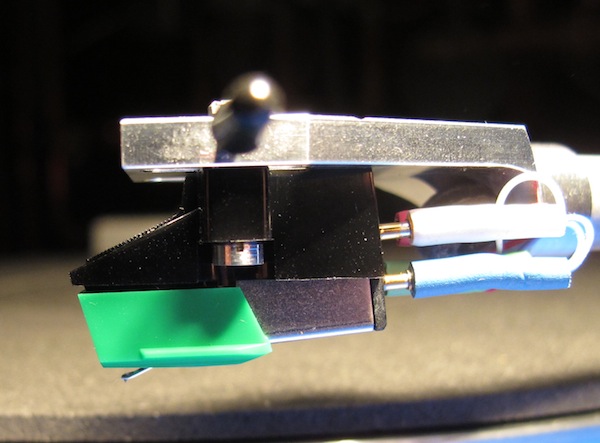
Audio-Technica AT95SA ($149.95)
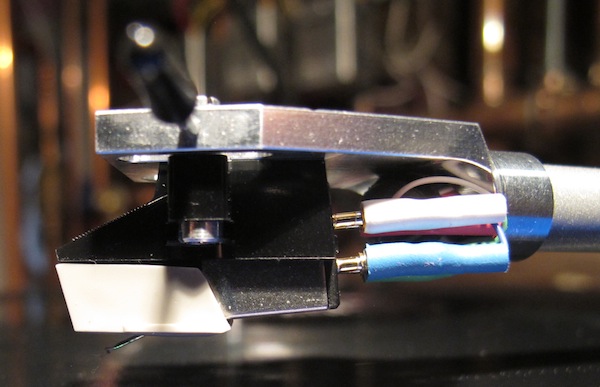
Audio-Technica AT7V ($159.99)
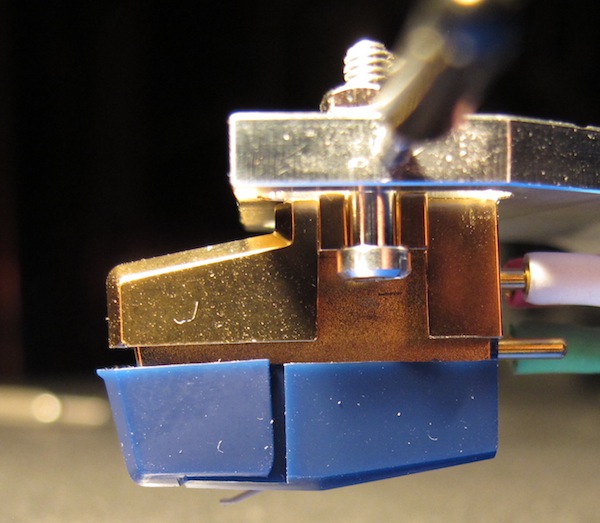
Grado Gold 1 ($220)
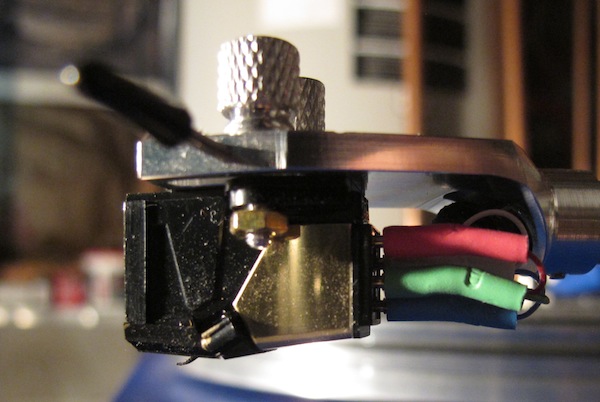
Ortofon 2M Bronze ($419)
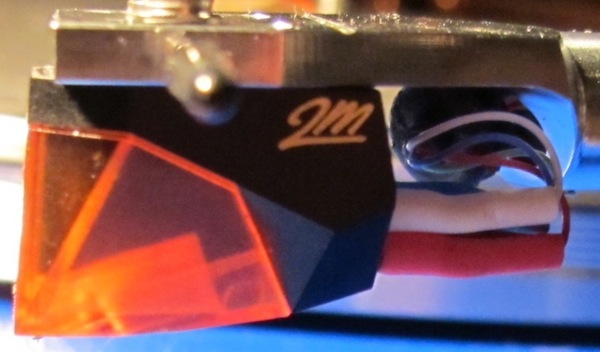
Nagaoka MP-300 ($499)
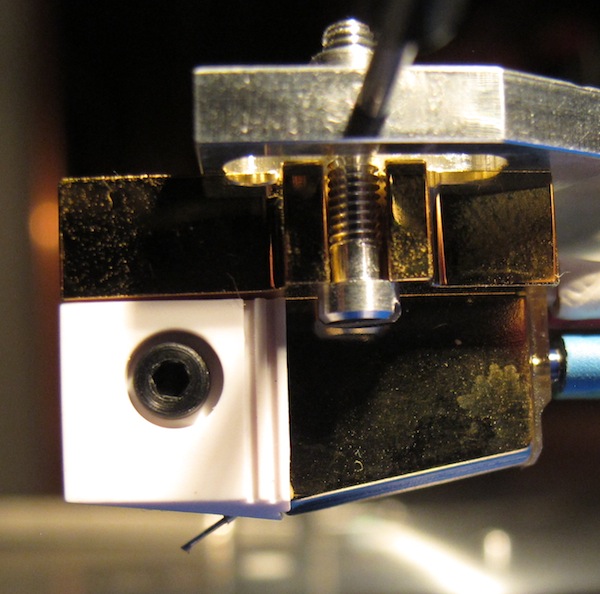
Sumiko Blue Point EVO III ($499)
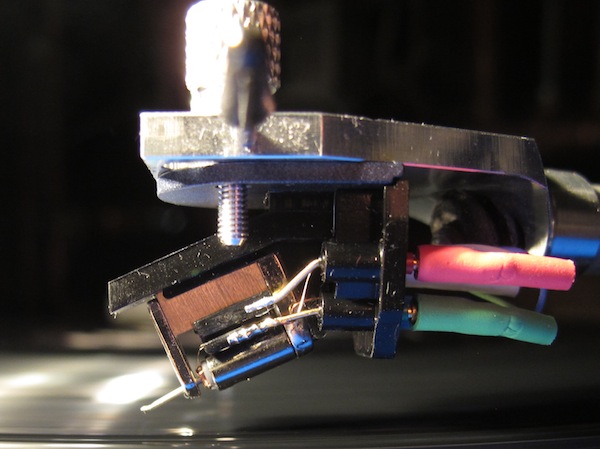
Ortofon 2M Black ($719)
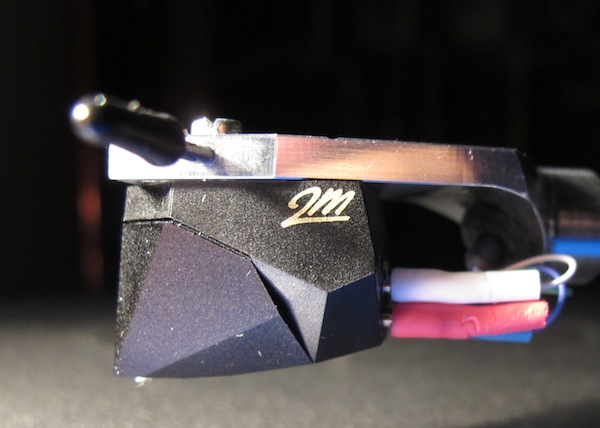
Audio-Technica AT150ANV ($999)
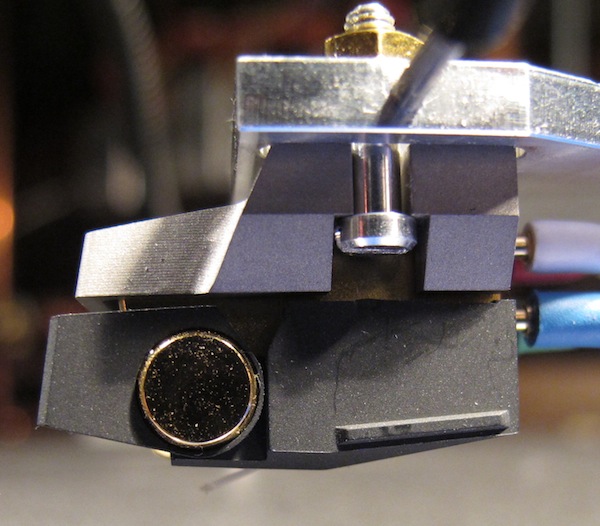
All are moving magnet designs, with the exception of the Grado Gold 1, which is a moving iron and the Sumiko Blue Point EVO III, which is high output moving coil design.
While the cartridges are listed above in order of price, the files are not! The are organized randomly. Right click on PC or Control click on a Mac to download to your desktop.
Download Cartridge Test File #1 (68.8 MB)
Download Cartridge Test File #2 (73.7 MB)
Download Cartridge Test File #3 (71.8 MB)
Download Cartridge Test File #4 (77.7 MB)
Download Cartridge Test File #5 (71 MB)
Download Cartridge Test File #6 (73.7 MB)
Download Cartridge Test File #7 (74.5 MB)
Download Cartridge Test File #8 (71 MB)
Download Cartridge Test File #9 (75.6 MB)
Download Cartridge Test File #10 (71.6 MB)
In a few weeks we will reveal their identities. In addition, because I’m sure some if not many of you will not take the time to download and listen, I will review each from my perspective and include the specs (etc.).
In addition, if you like the track (I didn’t get sick of it and I listened dozens of times), HDTracks has generously given us a discount download code if you are so digitally inclined. Also note that the album is available on CD and SACD as well as on vinyl.
Special HDTracks.com offer: Now through August 31st receive a 20% download discount on Myra Taylor's "My Night To Dream". Choose either the 88.2/24 bit or the 44.1k/16 bit version or both. Use promo code "compare20"
Choose your favorite sounding Cartridge Test File below:


that certainly looks like an Ortofon 2M Bronze in the second pic, not the $99 Red...
looking foward to listening to these

Everyone should own a Radio Shack SPL meter or even more convenient the SPL App for iPhone and other Smartphones...that should do it.

So, we have 10 files. The tenth file is the Anna. Is file number 10 the Anna? It says above: "The tenth is Ortofon’s $8499 Anna...That file is the “control” against which the others should be compared, except it will not be identified as such."
I guess I could listen and see if file 10 is that much better than the others, that way I'll answer my own question. Seems like we should be picking the second best file if we're ranking the budget cartridges?
D

No. Not the 10th on the list. Anna may or may not be the 10th or it might be the 1st or it might be "embedded" in between.

otaku2 has a good point. If these files aren't adjusted to be the same percieved volume within 1 dB, it will be difficult to judge accurately. I haven't downloaded the files yet so this point may be moot if the gain is carefully adjusted.

That's it! I've managed to repetedly talk myself out of a DAC for at least 5 years now. But this is just too damn cool to ignore. If I were to snag a Cambridge DacMagic 100, or perhaps the Audioquest Dragonfly, would either do these files any justice, or would I just be wasting my time/money?

I've got one here and if I can find some time, I will use it to convert the files and see what I hear but I bet it is. It's pretty darn good, certainly on an even plane with the A/D converter used...

I got the Dragonfly to get my feet wet into the digital domain. Amazing little piece of gear. I used it to listen to the tracks with my el cheapo Lenovo through my HD600 cans and also some through my system. Sounding good. Fun track.

All these files are at different levels so need running through a wave editor to normalise them to 0dB. Two files already peaked at 0dB but the others were all under.
This is a great idea - and withholding the identity lets you listen without preconceptions.
I'm pleased to see you're using a Graham Slee Era Gold V as I use this, along with an even better Graham Slee Reflex M, so the comparisons make it easier for me to relate to. You could do an 11th file - the Anna with the Era Gold partnered with a GSP Elevator EXP. That way the Era Gold's presentation would be common to all :o)

First of all, thank you for a fantastic idea and for the opportunity to hear the products myself, rather than just reading about them. I have yet to "take the test", but will and are looking forward to it! I really hope this practise will become a new norm in audio reviews (though obviously not possible for many types of products).
This has led to some thoughts I wanted to share, and hopefully get some reasonable answers to, or just an interesting discussion (there are many clever contributors to this excellent site).
If vinyl and analog sound has a special quality that digital formats do not, will this test be able to give us a reasonable impression of what each cartridge can do? Or are we missing something here (namely the essential analog quality)?
I am not trying to question whether analog sound is different from digital, or even that it is better (this would question both my sanity and the justification for my record collection, so let's quickly move on!). I simply raise the issue if there is a logical flaw in this experiment. To phrase this in another way: by setting up this test, is Mike actually saying that hi res files can satisfyingly reproduce the qualities of good (and even the best possible, re: MC Anna and Continuum) analog sound?
Perhaps the test is good enough to be able to hear just some of those most essential differences between the cartiridges and this is the motivation for the test.
This reminds me of a similar "logical problem". Mike describes bringing recordings from his analog setup to audioshows. On a CD. As far as I remember, the sound on those discs are much better than commercial CD's of the same music. I can't remember if Mike's are hi res files. Would this not indicate that a major component of the inferior sound on CD's is to be found where the CD's are mastered/produced, rather than in the format itself?
Again, I am not questioning the premise for this site or Mike's excellent work, which I very much enjoy and respect. I simply thought these questions were interesting and couldn't provide a good answer myself.

"This reminds me of a similar "logical problem". Mike describes bringing recordings from his analog setup to audioshows. On a CD. As far as I remember, the sound on those discs are much better than commercial CD's of the same music. I can't remember if Mike's are hi res files. Would this not indicate that a major component of the inferior sound on CD's is to be found where the CD's are mastered/produced, rather than in the format itself?"
That's an interesting question. I've also recorded some LPs in CD quality and found the results surprising: Not as good as the LP (lost a layer or two of sound quality) but better than commericial CDs of the same material, with some of the "analog coolness" surviving the conversion to digital.

I experimented with this for a number of years...
My current setup is "transparent" that is to say - I cannot blindly differentiate between a record and its digital copy (given both are perfectly level matched)
Obviously this is on my own gear (speakers and headphones) - and with my own ears.
But several ADC's have been junked along the way before I got to where I am now - I also learned a lot about the right gain required before the ADC - and the need to adjust it for best results.
And yes - in my opinion the Analogue mythos is just that - the difference is mastering and not medium. (the emperor has no clothes)
I will however admit that the issue might be the resolution of either my system or my ears. - but differences were obvious with all my earlier attempts at digital recording... so I am of the opinion as a result (given my empirical results) - that with sufficiently good gear and mastering care, digital is probably superior.
bye for now
David

The best A/D converter I've heard made by MSB was superb but it was still not 100% transparent to the source IMO. My brain at least, has "issues" with digitally sourced analog that's as much felt as "noise" as it is heard. When I listen to great digital it sounds very good. When I switch to analog the "noise" dissapears, I relax and can "sink into" the music. Can't do that with digital....

This is an experiment, for sure. I went into it not knowing how it will turn out. That's part of the "fun". My experience with digitizing analog, even at CD resolution, is that while there is loss, the "gist" does come through.
One year at CES I played the year's CD from vinyl (people expect a new one every year).
I had re-wired the Cobra tonearm with a different brand of wire that I won't mention. I wasn' happy with the results and guess what? Everyone said "Well it sounds good but it doesn't sound as good as last year. Some of the 'magic' is gone. It's brighter and harder sounding."
Exactly what I heard too.
I think since all cartridges were put through the same digital masher, they are all competing on an even playing field and the tonal differences will come through as will the resolution differences up to the A/D converter's performance potential. l

A comment from my own experience of doing this same exercise with my own cartridges...
The tracks need to be normalised on their Average RMS levels and not on their peak levels.
Peak levels above the Av RMS will provide a quantifiable measure of cartridge dynamic ability.
Normalising on peak values will of course accentuate dynamic differences perceptually.
looking foward to going through these files
Thank you for the chance to "listen" to these cartridges back to back
David

I pulled the tracks into Adobe Audition and did some quick statistics on them...
All figures in dB - Peak is RMS average
Track 1 peak -2.08 Av -21.98
Track 2 peak 0db Av -19.15
Track 3 peak -2.08 Av -21.98
Track 4 peak -6.15 Av - 26.35
Track 5 peak -7.73 Av - 27.79
Track 6 peak -5 Av -25.19
Track 7 peak -2.88 Av -21.93
Track 8 peak -3.32 Av -23.02
Track 9 peak 0 Av -17.76
Track 10 peak -2.53 Av -22.61
Comments based on the stats:
1) Track 9 and track 2 are clipping - this will introduce some hash - how much depends on how often it clips, and how well the ADC copes with it. (also how well the individual listeners DAC copes with it too!)
2) The tracks are NOT normalised - highest level is track 9 at -17.76, lowest is Track 5 at -27.79, a 10db difference is huge
In terms of dynamics they range from a low of 19.7db (difference from average to peak) to a high of 20.2db - 0.5db difference, not huge but enough to be noticeable (Track 2 seems clipped by around 0.8db, Track 9 seems clipped by around 2.5db)
The tracks should be normalised to the same Average/RMS level - probably around -24db - which would provide for a touch of headroom to keep people's DAC's happy.
I may be accused of being obsessive compulsive for making these comments (and measurements) - but when I did this experiment myself, the tracks were dramatically more similar once normalised.... which demonstrates the huge influence of amplitude on psycho acoustics.
Without normalisation the results cannot be valid....
(I would be happy to normalise and republish the tracks if that is helpful)
bye for now
David

No not really. They should be normalized and next time I do this I will. I am more curious to know what people hear and how the voting goes. Your numbers are useful. I think an SPL meter should suffice to get levels close enough, but you are correct that normalizing will make it better and easier...

A listener should be able to do this even if all you have is a less expensive program like Sony Audio Studio or NCH Wav Pad that can both play flac files and allow some mastering of track one might own. For this you migh have had to reduce the level by a db but that won't really help the recorded clipping that is part of the file.
Michael, thanks for all the work you did on this. It is greatly appreciated.

This is really great. I do agree with those who state that the tracks need to be volume matched for best results. I note that the leading vote getter is currently also the sample with the loudest average RMS.
I volume matched in my own audio editor, reducing the volume of all tracks except the one with the lowest average RMS so that they are approximately volume matched. This makes it easier to hear differences in tonality, resolution, etc. because volume difference is always going to be most obvious thing perceptually.

The way to get the levels right is to capture a 1KHz reference tone from a test disc and adjust the analogue gain into the ADC so as to at least get that equal for each test. This is more valid than normalising either the peak or average levels. This has to be done by the recordist, obviously. There's not much the end user can do about the levels really objectively without this.
In any case it's great that MF has done this and presented it blind.

I will do that... this is just a first step. There were some "around here" who didn't think many Analogplanet readers would bother with this digital domain stuff. I thought otherwise and that's proven to be the case so far.

Thank you. Nothing is perfect, but as first steps go this is fantastic. Thanks to Chad for allowing this also...I'm going to buy the Myra Taylor album. It sounds great.

It just goes to show that, "around here", we love to listen to the music and to tinker with the sound. We just prefer analog.

I noticed the different types of cartridge screws used. Due to weight they change they change tonearm mass do they not? Does this alone hinder an apples to apples comparison? Why or why not?

The cartridges vary from relatively high compliance, to solidly mid compliance - unless the arm was varied to match each cartridge there will always be some matching differences!

The cartridges don't weigh the same either. As long as the total effective mass versus the compliance of the cartridge puts the resonant frequency of the mass/spring system in the desired 8-12Hz range, I don't see any issues....

1. Third picture down: Audio-Technica AT7V. Did you test it
with only three wires attatched? Thanks.

No! It was completely wire... I was removing the cartridge when I realized I hadn't taken a picture of it. One wire was off and I didn't bother to reconnect it...